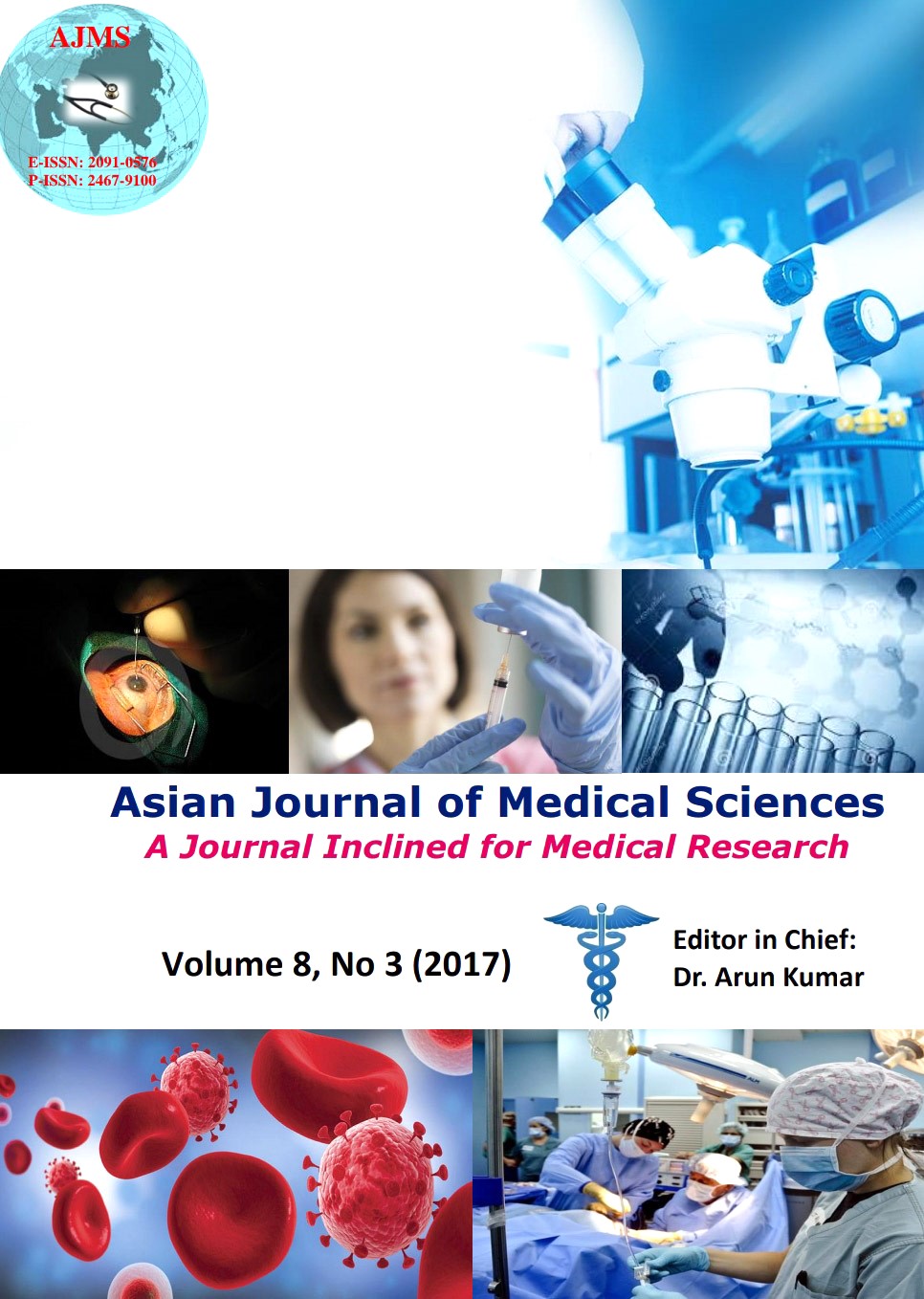Metabolic acidosis in medical intensive care unit with indicators and their prognostic value- A prospective observational study
Keywords:
Anion gap, Henderson-Hasselbach, Strong ion gap, Stewart modelAbstract
Background: Metabolic acidosis is a common abnormality in the intensive care unit. There has recently been a surge of interest in nontraditional approaches to the analysis of acid base disorders.
Aims and Objectives: This study was undertaken to compare the application of the physicochemical method of Stewart and the traditional Henderson-Hasselbach equation with
correction for albumin in quantification of acid base disorders.
Materials and Methods: All patients with metabolic acidosis admitted to the ICU as defined by a base deficit of >2.5 were included in the study. The APACHE II score was calculated at admission and the predicted mortality was defined. The acid base disorders were quantified by the traditional approach with anion gap correction for serum albumin as well as by the Stewart method with calculation of the strong anion gap acidosis.
Results: One-hundred forty patients were included in the study of which 58% were males. In 125 subjects (89%) acidosis was discovered by the Stewart method. The traditional method detected increased anion gap in 109 subjects (78%) but this increased to 124 (88.5%) when corrected for albumin. Both the strong ion gap (SIG) and the albumin corrected anion gap correlated strongly. Serum lactate levels and SIG predicted mortality as did albumin corrected anion gap.
Conclusion: Albumin correction of the anion gap correlates well with acidosis as discovered by the SIG and therefore should be used in the ICUs rather than the traditional anion gap. With this modification, we can thus depend on the application of the intuitive traditional method rather than the more difficult to apply Stewart method for analysis of the acid base abnormalities in the ICU.
Asian Journal of Medical Sciences Vol.8(3) 2017 60-67
Downloads
Downloads
Published
How to Cite
Issue
Section
License
Authors who publish with this journal agree to the following terms:
- The journal holds copyright and publishes the work under a Creative Commons CC-BY-NC license that permits use, distribution and reprduction in any medium, provided the original work is properly cited and is not used for commercial purposes. The journal should be recognised as the original publisher of this work.
- Authors are able to enter into separate, additional contractual arrangements for the non-exclusive distribution of the journal's published version of the work (e.g., post it to an institutional repository or publish it in a book), with an acknowledgement of its initial publication in this journal.
- Authors are permitted and encouraged to post their work online (e.g., in institutional repositories or on their website) prior to and during the submission process, as it can lead to productive exchanges, as well as earlier and greater citation of published work (See The Effect of Open Access).




